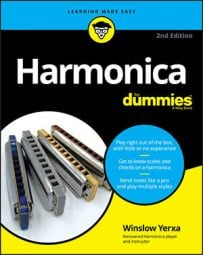Intervals are the building blocks of scales, melodies, and chords when you are playing the harmonica. However, before delving into them, you need to understand the principle that organizes them all around one central note, the key note, or tonic.
When musicians say something like, “Let’s play in the key of E major” or “Was that really played in the key of B♭ minor?” they’re referring to E or B♭ as the tonic note, the note that determines the key of the song.
The tonic is often called the tonal center. If you listen to a song you can hear how the tonic sounds prominently and frequently in the bass notes, in the chords, and in the melody, where it’s the most prominent note. It’s often the note that ends phrases and nearly always is the last note in a song.
By being asserted so often, the tonic gives the impression of being the center of the universe for that song. Every time the melody goes away from the tonic, it takes you on a journey. When the melody returns to the tonic, it’s like coming home from an interesting trip.
When you’re listening to music, try to feel where the tonic note is. Listen for it in the melody and in the bass notes. When you find it, hum it and feel how it defines everything else going on in the music. After you define the tonic note, try humming or playing other notes, and then note how they interact with the tonic.
If you want to identify the key by name, find an instrument (such as a keyboard) that allows you to match the note and easily identify which note you’re hearing.
The tonal center of a song determines the character of the scale and the chords used in the song, because they’re described by their relationship with the tonic.

